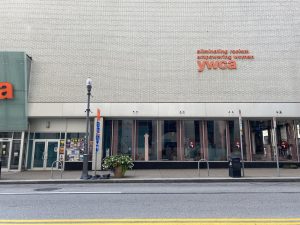Student attendance wildly varies this semester
December 8, 2021
With the return of in-person operations for the Fall 2021 semester, Point Park students and faculty have noticed a fluctuation in student attendance and participation within both in-person and online classes, leading to questions as to why some have noticed increased attendance and participation while others have seen major declines.
“If I look at my courses, [decreased attendance] may have been slightly higher than before, but in general, I believe that it remains pretty consistent,” Paige Beal, an associate professor in the Sports, Arts and Entertainment Management (SAEM) department said.
With student adjustment back to in-person operations, and the detection of the new COVID-19 variant Omicron in Pennsylvania earlier this month, both students and faculty have seen how these and other factors have impacted attendance and participation within the classroom.
“I think people are still adjusting to being in-person again since there are several changes they need to make. Whether it is fixing their sleep schedule, figuring transportation and living adjustments down on campus, or class involvement can all contribute to the student’s lack of willingness to be in-person again,” James Hodgetts, a sports communication major, said.
Although students are facing some hurdles with attendance, Photography and Photojournalism Professor Chris Rolinson said he thinks that students are invested in their classes..
“I think students want to be in class. I don’t think that it’s something they’re trying to do,” Rolinson said. “During the pandemic, we were asked as professors to be flexible, and I still believe that we’re still in that regard zone.”
According to Point Park’s Student Handbook, the university’s attendance policy states that classroom attendance is the “responsibility of the student,” where attendance requirements within courses are “set by the faculty member.”
The policy also makes note that students who will be absent due to “serious and extended illness” or general excused absences “may request the assistance of the Student Health Center or University Counseling Center in notifying their faculty members.”
“We allow instructors and academic programs to set attendance policies because they’re in the best position to know which learning outcomes are essential to a course,” Michael Soto, Provost and Senior Vice President of Academic Affairs, said. “Many times, it’s impossible to assess these outcomes if a student is absent from class. University policies do protect students who must miss class because of illness or to observe a religious holiday.”
For his courses, Rolinson said that there has not been a significant change in his classes attendance since the transition to online classes and pre-pandemic school years.
“[Student attendance] doesn’t feel like it’s any worse than any other semester that I’ve had in the past,” Rolinson said. “That may be an anomaly for me because maybe it’s the subject matter. For me, my Introduction to Digital Photography classes are the ones where attendance may be the biggest problem, but I still haven’t noticed anything out of the ordinary for that quite honestly.”
Although Rolinson has not noticed much change within his classes’ dynamics, Dorene Ciletti, an associate professor and the Director of Marketing and Sales, said that she has seen a significant, increased level of attendance and participation throughout her hyflex and remote synchronous courses this semester.
“During the period of significant remote learning, I observed relatively strong attendance in remote class sessions and found that, in some sessions, given similar materials and activities, participation was stronger and more diverse,” Ciletti said. “For example, students regularly used the chat feature or unmuted to respond to prompts, and for some prompts, all – or nearly all – students were engaged.”
Although some professors and students have showcased normal or increased levels of student attendance and participation within the classroom, others have seen slight or large decreases in students’ engagement, attendance and even work ethic.
“I have noticed a few changes in comparison to remote and in-person classes. One big change is the class participation,” Hodgetts said. “I’ve noticed more students since the start of the pandemic have been less interactive with their professors regarding participation effort.”
Within her classes, Beal has noticed that although there have been slight decreases of attendance, more students within her class have utilized the hybrid option that has continued to be offered for some classes during this semester. She said this has become slightly difficult with classes being fully in-person.
“Because we came off of a fully virtual situation, I am finding more students at the last minute will say, ‘can you send me the link for the class?’, and that’s challenging because it is an in-person class,” Beal said. “Depending upon where you are and what equipment you have, managing two elements can be very challenging. My policy is that I will do it for you if you’re ill, but it really isn’t there for you if you don’t feel like showing up for class. I think many students have the assumption that they have that option, and that was not my read on it, but I find that difficult to manage.”
With this, professors said they believe that communication between students and other professors during this semester will be essential as Point Park continues to change policies of in-person operation and hybrid options due to the ongoing COVID-19 pandemic.
“It’s a two-way street; students have made a commitment to be here, and you should want to be in classes that you paid for. I think that’s the biggest thing, that if you are having a problem attending classes, be in constant communication with your professors,” Rolinson said. “Communication from the part of the students is key and flexibility on the part of the professor works as well.”


















